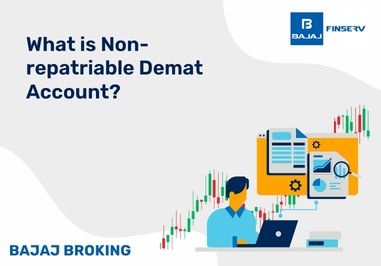Mutual fund investments offer flexibility, but transferring them isn’t always straightforward. Unlike stocks, mutual fund units cannot be freely transferred between individuals except in exceptional cases such as the death of the primary investor. However, investors can still move their mutual fund holdings between platforms, brokers, or demat accounts through specific processes. Understanding these processes is essential to ensure seamless transitions while avoiding unnecessary fees or tax implications.
Whether you wish to consolidate your holdings, switch to a more cost-effective option, or ensure your investments are passed on to your loved ones, knowing the correct steps can help you navigate the process efficiently. In this guide, we will explore the different ways to transfer mutual funds, the restrictions involved, and how to move them between brokers or into a demat account.
Can mutual funds be transferred?
Many investors wonder, can mutual funds be transferred between individuals or accounts? In most cases, mutual fund units cannot be directly transferred to another person. However, they can be moved between brokers or to a demat account. Transfers between individuals are generally restricted to cases involving inheritance or legal heirs. Otherwise, investors can sell and repurchase units, though this may incur taxes and charges.
Transferring to another person
Moving mutual funds to another individual is generally not allowed, except under certain circumstances such as inheritance. Here’s how the process works:
In the event of death:
If the original investor passes away, the units are transferred to the joint holder (if applicable). If there is no co-holder, the nominee or legal heir receives the mutual fund units upon submission of the necessary documents, including the death certificate and KYC details.
Gifting to minors:
While mutual fund units cannot be directly transferred, you can purchase mutual funds in your child’s name as a guardian. This is a way to ensure future financial security for your children.
Legal transmission:
If no nominee is registered, the legal heir can claim the units by providing indemnity bonds, a succession certificate, and bank details.
Transferring Between Different Brokers
Although transfer mutual funds directly between individuals is restricted, investors can move their holdings from one broker to another. This can be done through an in-kind transfer, allowing investors to avoid selling and repurchasing units, which could lead to tax implications.
Step 1: Initiate the transfer –
Request a transfer form from the new broker and fill in details of your current holdings.
Step 2: Submit required documents –
Provide proof of identity, account statements, and any outstanding fees with your existing broker.
Step 3: Wait for completion –
The process usually takes a few days, depending on the broker’s policies. Ensure there are no exit loads or transfer charges before proceeding.
This process helps consolidate investments in one place and may offer lower expense ratios if switching to a direct plan.
How to Transfer Mutual Funds to a Demat Account?
Moving mutual fund units into a demat account can provide better tracking and management. This process can be done online or offline.
Online Method
Log into your demat account and go to the mutual funds section.
Select the transfer option and choose the fund and number of units to transfer.
Select your demat account as the destination.
Review and submit the request.
The transfer is processed electronically without requiring physical documentation.
Offline Method
Obtain a Conversion Request Form (CRF) from your depository participant (DP).
Fill out the form with your mutual fund details and attach your account statement.
Submit the form along with the necessary documents to the DP.
The DP will forward the request to the fund’s registrar, and the units will be credited to your demat account.
Understanding how to transfer mutual funds efficiently ensures smooth transitions while avoiding tax burdens and unnecessary costs. Always verify the applicable charges and consult with financial advisors if necessary.
What Happens to Mutual Fund Transfers After an Investor's Death?
The transfer of mutual funds after an investor's death is known as transmission and follows a structured process. This ensures that investments are smoothly passed on to rightful beneficiaries. However, can mutual funds be transferred in such cases? Yes, but only under specific conditions and with proper documentation.
If the investor had a co-applicant, the mutual fund units are automatically transferred to them. If no co-applicant exists, the units are transferred to the nominee or legal heir. The process requires the submission of essential documents, including:
Death certificate of the deceased investor
KYC details of the nominee or legal heir
Bank account details for future transactions
Indemnity bond (if applicable for large amounts)
A well-defined nomination helps avoid legal disputes. If no nominee is specified, the transfer may take longer, requiring legal verification. Hence, it’s crucial to ensure that nominee details are updated for seamless transfer of mutual funds.
Switching Between Mutual Fund Schemes Within the Same Fund House
Switching between mutual fund schemes within the same fund house is an easy way to realign investments. Instead of selling and reinvesting, investors can switch from one scheme to another, such as moving from an equity fund to a debt fund. This process is efficient and helps adjust risk exposure according to financial goals.
A common way to switch funds is through a Systematic Transfer Plan (STP). This allows investors to gradually move investments between schemes to manage risk and optimise returns. Unlike external transfers, internal switches generally do not attract taxes or exit loads, making them a hassle-free way to rebalance portfolios.
Why Are Mutual Fund Units Not Easily Transferable?
The transfer of mutual funds is restricted to safeguard investors and maintain regulatory compliance. Allowing free transfers could lead to tax evasion, money laundering, and market manipulation.
Mutual funds are designed to be easily bought and sold on the open market, eliminating the need for direct transfers. Instead of transferring, investors can sell their holdings and reinvest elsewhere. This ensures transparency and protects the integrity of the investment ecosystem.
When Should You Think About Moving Your Mutual Funds?
Although can mutual funds be transferred freely is a common question, direct transfers are limited. However, investors might consider moving their funds under certain conditions:
Switching to a better-performing fund for higher returns
Adjusting investment strategy, such as shifting from equity to debt funds
Reducing costs by moving from regular to direct plans
Consolidating investments under one broker for easier management
Understanding how to transfer mutual funds within legal limits ensures smoother portfolio management.
Key Factors to Consider Before Transferring Your Mutual Funds
Before deciding to transfer mutual funds, investors should carefully evaluate several critical factors:
1. Exit Loads:
Some mutual funds charge an exit load fee if sold within a stipulated period, reducing overall returns.
2. Tax Implications:
Selling and repurchasing mutual funds can trigger capital gains tax. Short-term gains (held under three years) are taxed at 15%, while long-term gains above ₹1 lakh attract 10% tax.
3. Transaction Costs:
Investors should check for brokerage fees, stamp duties, and processing charges when switching brokers or transferring units to a demat account.
4. Investment Strategy:
Before transferring, ensure the move aligns with financial goals, such as risk reduction or portfolio diversification.
5. Documentation Requirements:
Whether switching funds or transferring after death, submitting the correct documents on time is crucial to avoid delays.
6. Nominee Details:
Always keep nominee details updated to facilitate a smooth transfer process in case of unforeseen circumstances.
By considering these factors, investors can make well-informed decisions and manage their portfolios effectively. If unsure, consulting a financial advisor can provide clarity on how to transfer mutual funds while minimising risks.














